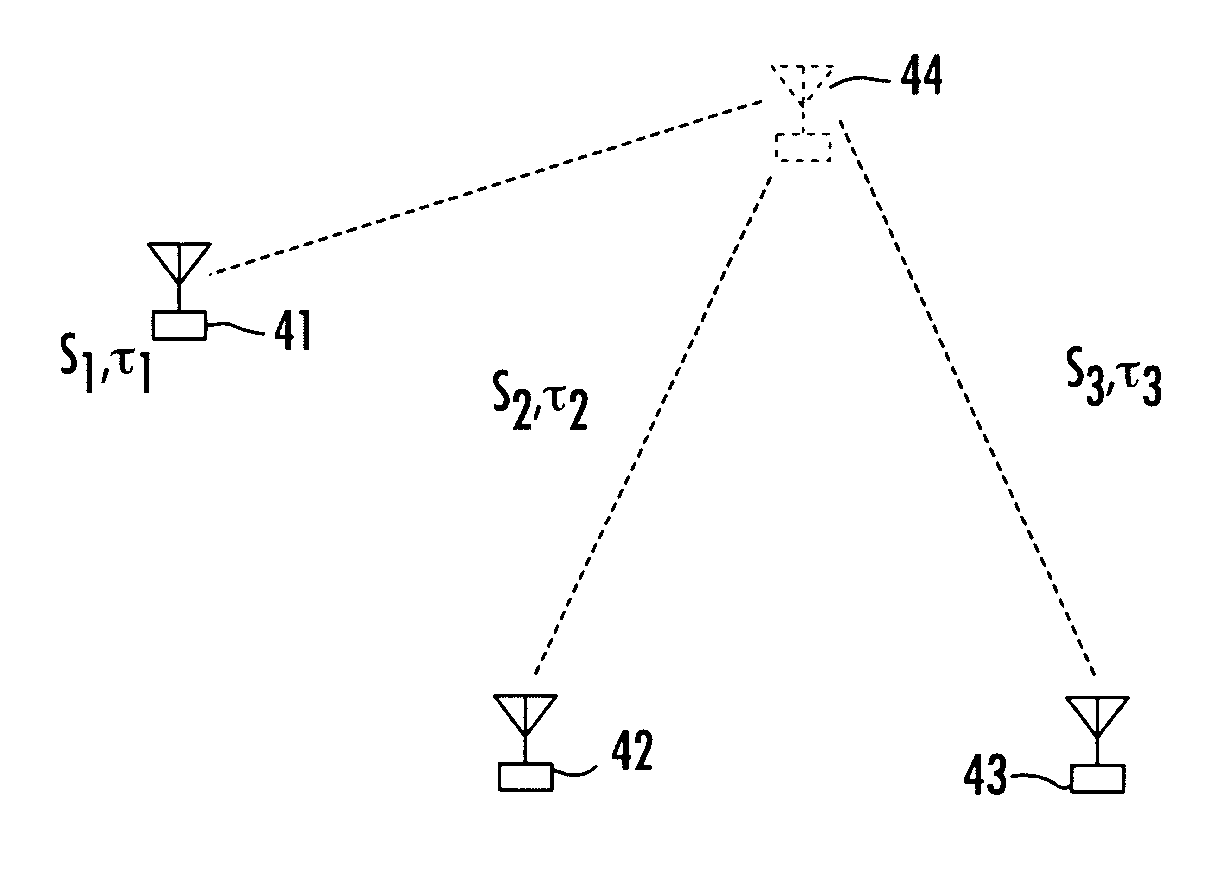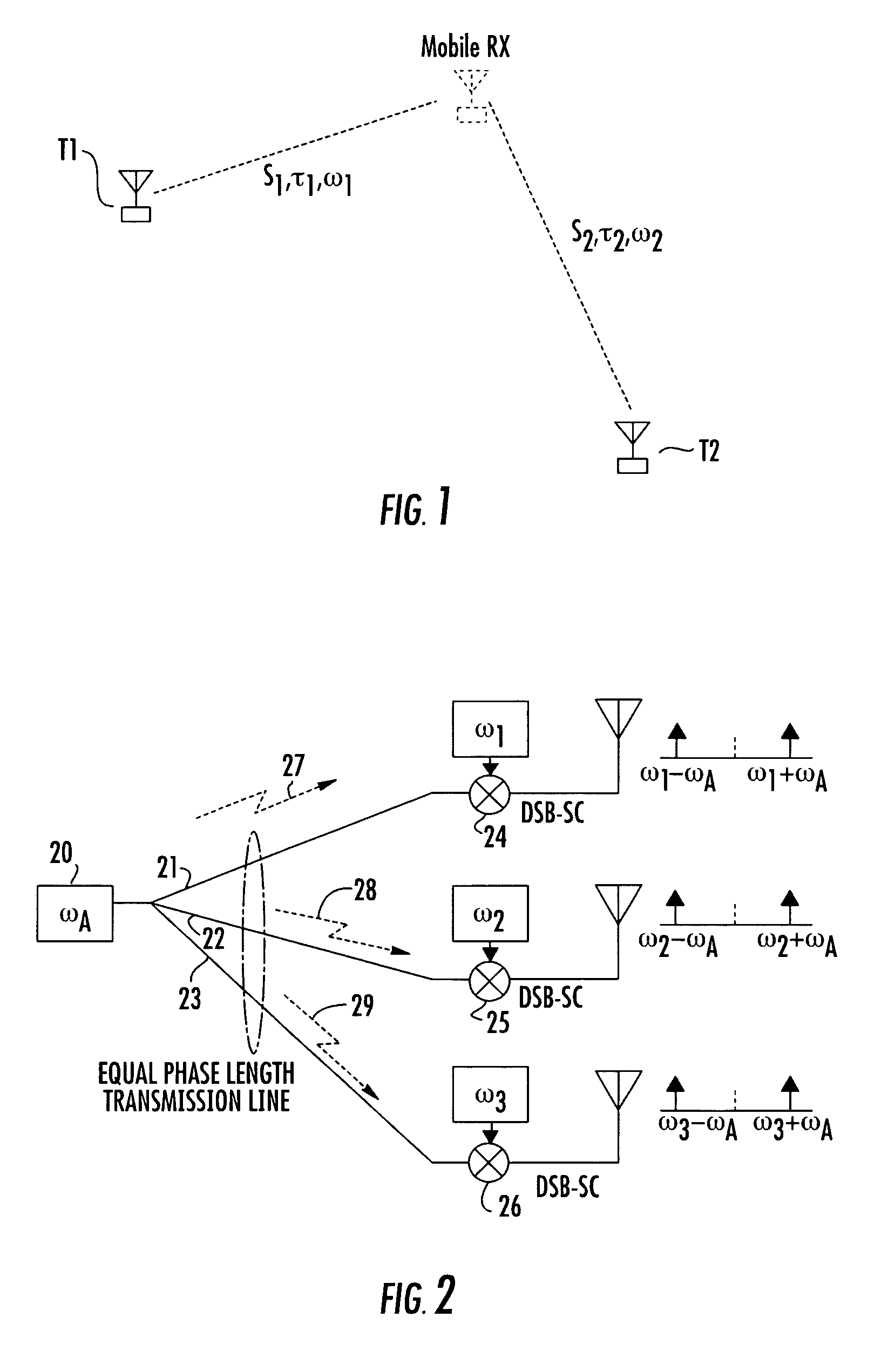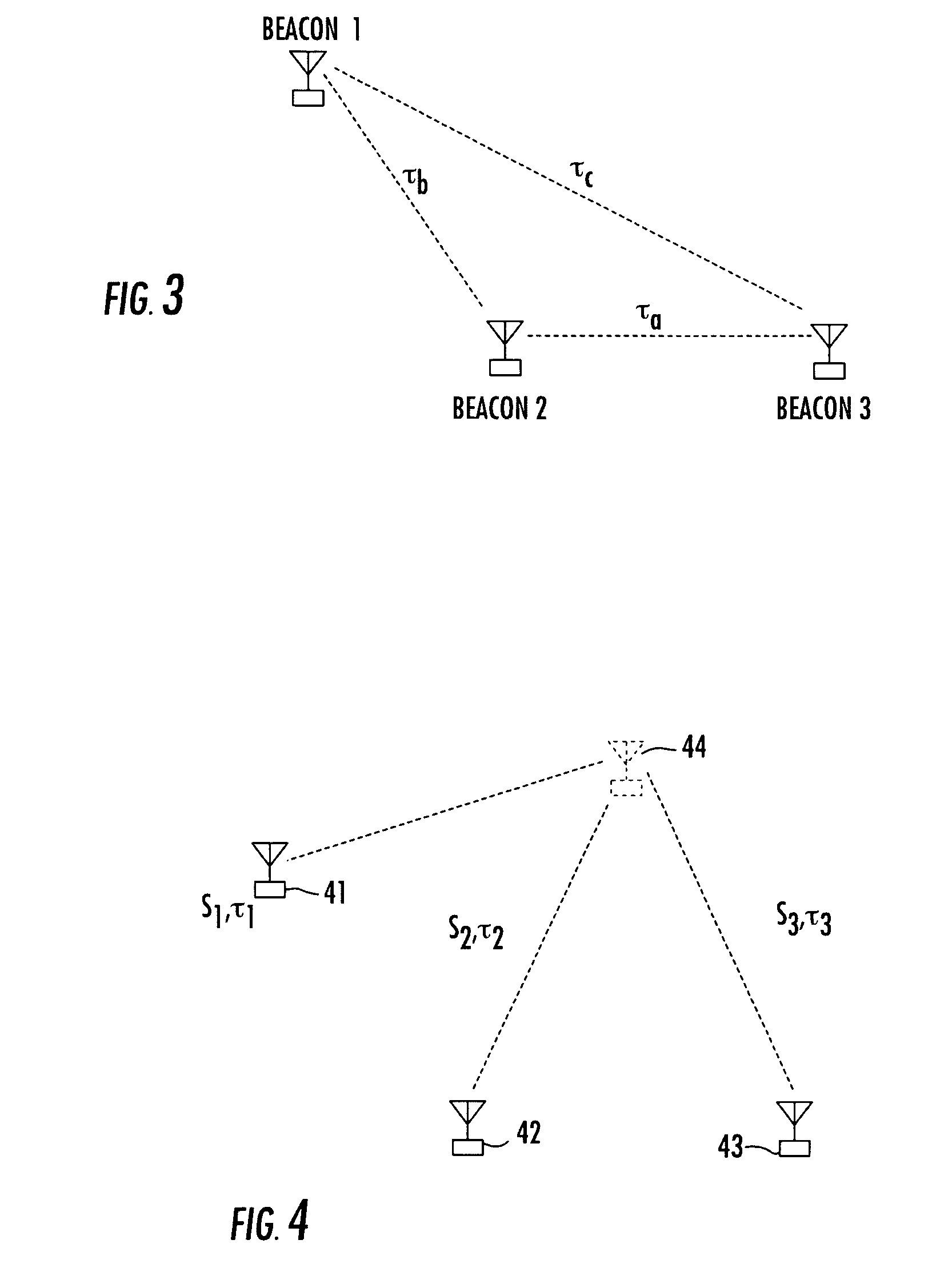Method of locating object using phase differences among multiple frequency beacons transmitted from spaced apart transmitter sites
a technology of multiple frequency beacons and objects, applied in the field of communication, can solve the problems of gps system suffering when the receiver is subject to significant obstruction, gps location and tracking is not an all inclusive technique, etc., and achieves the effects of improving performance, improving sensitivity, and low signal-to-noise ratio
- Summary
- Abstract
- Description
- Claims
- Application Information
AI Technical Summary
Benefits of technology
Problems solved by technology
Method used
Image
Examples
Embodiment Construction
[0076]Before detailing the architecture and methodology of the multi-frequency beacon-based object location system in accordance with the present invention, it should be observed that the invention resides primarily in a prescribed novel arrangement of conventional communication circuits and components, and supervisory control software therefor that employs the phase and time difference algorithms of the invention. Consequently, the configurations of such circuits and components and the manner in which they may be distributed relative to an object whose location is to be determined have, for the most part, been shown in the drawings by readily understandable block diagrams, which show only those specific aspects that are pertinent to the present invention, so as not to obscure the disclosure with details which will be readily apparent to those skilled in the art having the benefit of the description herein. Thus, the system / network and subsystem (e.g., beacon transmitter) block diag...
PUM
 Login to View More
Login to View More Abstract
Description
Claims
Application Information
 Login to View More
Login to View More - R&D
- Intellectual Property
- Life Sciences
- Materials
- Tech Scout
- Unparalleled Data Quality
- Higher Quality Content
- 60% Fewer Hallucinations
Browse by: Latest US Patents, China's latest patents, Technical Efficacy Thesaurus, Application Domain, Technology Topic, Popular Technical Reports.
© 2025 PatSnap. All rights reserved.Legal|Privacy policy|Modern Slavery Act Transparency Statement|Sitemap|About US| Contact US: help@patsnap.com



